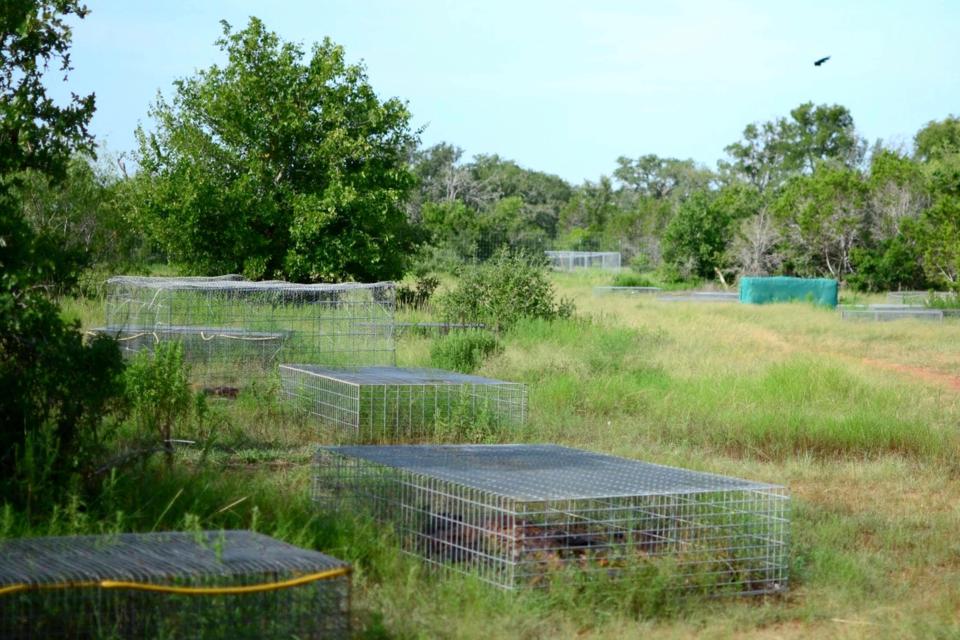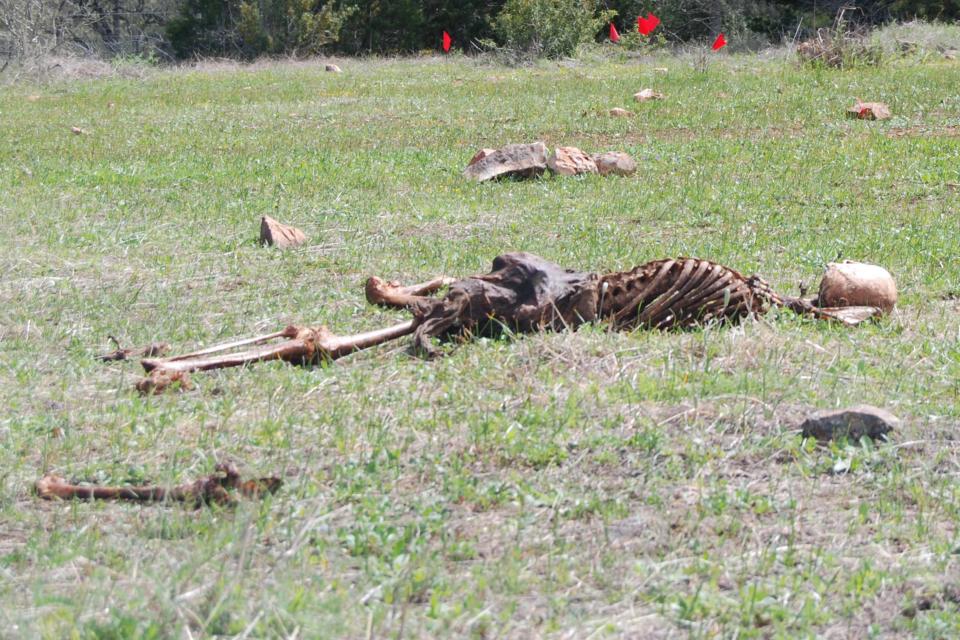Hot Stories
Recent Stories
Inside The Body Farm Where Human Dead Bodies Rot In Open Cages To Help Scientists Solve Murders
Posted by Samuel on Fri 15th Dec, 2017 - tori.ngThe inside of a body farm in Texas where human dead bodies rot in open cages to help scientists solve murder cases, has been revealed.

Rows of human bodies lie in cages at the forensic science research site in Texas
These gruesome images show the inside of a body farm – a graveyard where the dead are left to rot in cages.
Row upon row of human corpses are lined up in the open air in the remote Texan field as part of scientific research into how bodies break down.
Row upon row of human corpses are lined up in the open air in the remote Texan field as part of scientific research into how bodies break down.
The so-called body farm is actually a crime lab that helps police determine when murder victims were killed.
Scientists at The Forensic Anthropology Centre at Texas State University study human remains at various stages of decomposition.
They can then compare them to remains of people who may have died in suspicious circumstances.
Bodies are shielded under metal cages to stop vultures from eating the rotting flesh.
Scientists at The Forensic Anthropology Centre at Texas State University study human remains at various stages of decomposition.
They can then compare them to remains of people who may have died in suspicious circumstances.
Bodies are shielded under metal cages to stop vultures from eating the rotting flesh.
The evidence gathered here can be used in court and researchers have been called to give evidence for both prosecution and defence.
Insect larvae that feed on corpses are among the clues that allow experts to estimate how long a person has been dead.
Donated bodies can also be used to help with facial reconstruction.
By using the skulls of those who volunteer for the open burial - plus pictures of them before they died - scientists can help police produce an image of how victims may have looked.
Insect larvae that feed on corpses are among the clues that allow experts to estimate how long a person has been dead.
Donated bodies can also be used to help with facial reconstruction.
By using the skulls of those who volunteer for the open burial - plus pictures of them before they died - scientists can help police produce an image of how victims may have looked.
Most of the bodies are from "living donors" who signed up before they died – although some are donated by next of kin who cannot afford a proper funeral.

Bodies are left out to rot for up to two years, and after scientists study the skeletons
They often have worked in law enforcement so know how useful the facilities are, according to decomposition expert Dr Danny Wescott.
He said: "It allows us to see how bodies decompose.
"We have two criteria for the bodies – they must be under 500lb when they die. And they must not have any active infectious diseases like hepatitis C.
He said: "It allows us to see how bodies decompose.
"We have two criteria for the bodies – they must be under 500lb when they die. And they must not have any active infectious diseases like hepatitis C.
"If the person is within a 200 mile radius when they die we can get the body.
"It then gets assigned to a research project. The bodies can be left out in the field for six months to a couple of years.
"Law enforcement provides different scenarios and we look at the effects of clothing and things like diabetes on the body.
"We also look at the ecology side – and how it impacts specifically on insects."
There are currently almost 70 bodies at the Texas research site, where British forensic scientists also study because body farms are not allowed under UK law.
"It then gets assigned to a research project. The bodies can be left out in the field for six months to a couple of years.
"Law enforcement provides different scenarios and we look at the effects of clothing and things like diabetes on the body.
"We also look at the ecology side – and how it impacts specifically on insects."
There are currently almost 70 bodies at the Texas research site, where British forensic scientists also study because body farms are not allowed under UK law.
Dr Wescott said: "There are more men than women but we also get some couples who donate their bodies.
"Of course the nature of death means that we mostly see older people coming here. That is one of the limitations of a donated collection.
"But we also have some younger people who chose to donate too.
"A consideration that a lot of our living donors make is that they don't want to be a financial burden to their family. This is a cheaper than a funeral."
"Of course the nature of death means that we mostly see older people coming here. That is one of the limitations of a donated collection.
"But we also have some younger people who chose to donate too.
"A consideration that a lot of our living donors make is that they don't want to be a financial burden to their family. This is a cheaper than a funeral."
***
Via The Sun UK
Top Stories
Popular Stories
Stories from this Category
Recent Stories
















































